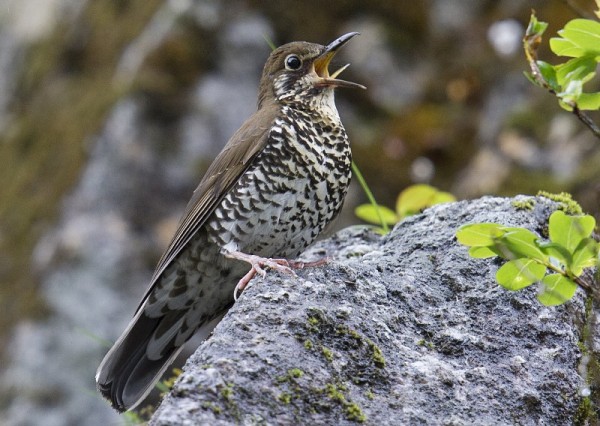“Has a musical song and named after Dr Sálim Ali”

MUMBAI, January 22: A bird species, locally common in eastern Himalaya and overlooked till now, has been identified as a new species. A team of scientists from India, Sweden, China, US and Russia have described this species from northeastern India and adjacent parts of China as Himalayan Forest Thrush. This is the first Indian bird (Zoothera salimalii), which has been named after Late Dr Sálim Ali, who was closely associated with BNHS-India, including as a researcher, honorary secretary and finally as its president. The bird has been named after him in recognition of his huge contributions to the development of modern Indian ornithology and wildlife conservation.
New bird species are rarely discovered to science nowadays, when most natural habitats are shrinking. Since 2000, an average of five new species have been discovered globally every year, mostly from South America. Himalayan Forest Thrush is only the fourth new bird species described from India by modern ornithologist since independence. Commenting on the development, Dr Asad Rahmani, Senior Scientific Adviser and former Director, BNHS said, “It is a remarkable discovery and shows how much more we have to do in the field of ornithology in India. It also proves that northeastern India is a treasure trove of biodiversity that needs protection from the mega projects that are planned in Arunachal Pradesh without giving any attention to biodiversity conservation.”
The tale of discovery

Dr Per Alström and Shashank Dalvi first discovered the species in May-June 2009 while studying birds at high elevations in western Arunachal Pradesh. It was realized that instead of a single species – Plain-backed Thrush (Zoothera mollissima) – as believed till now, in reality there exist two different species in eastern Himalaya. Till now Himalayan Forest Thrush has been overlooked because of its close similarity in appearance to the Plain-based Thrush, now renamed as Alpine Thrush.

Studies of specimens in 15 museums across seven countries revealed consistent differences in plumage and structure in the birds from the above two populations. It was confirmed that the species – Himalayan Forest Thrust – found to be breeding in the coniferous and mixed forests of eastern Himalaya was not separately classified till now. What first caught the attention of the scientists was the fact that the ones found in forests (Himalayan Forest Thrush) had a rather musical song, whereas individuals found in the same region on bare rocky habitats above the tree-line (Alpine Thrush) had a much harsher, scratchier and unmusical song.
Further analyses of its plumage, structure, song, DNA and ecology throughout the range revealed that a third species was present in central China. While this population was already known, it was treated as a subspecies of Plain-backed Thrush. It is now called Sichuan Forest Thrush, which has an even more musical song than that of Himalayan Forest Thrush. A fourth species from China remains unnamed. Future field studies are required to confirm this. More information about the recent findings can be found on the following link: http://dx.doi.org/10.1186/s40657-016-0037-2
